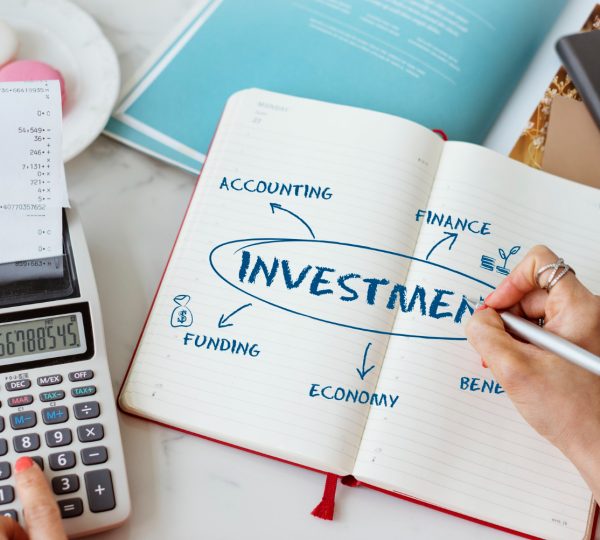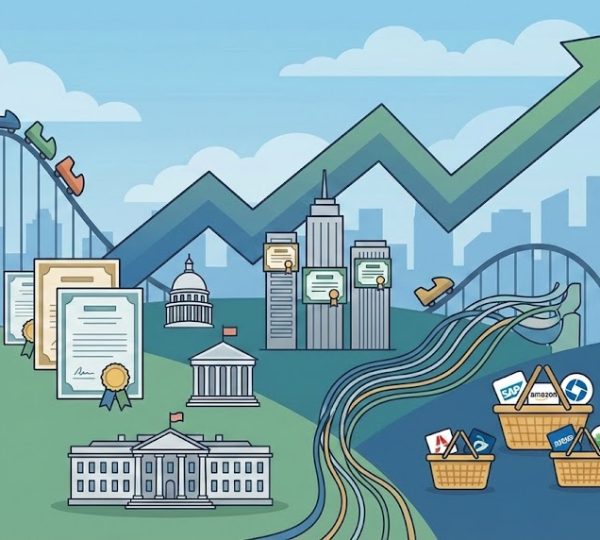Rising corporate, infrastructure, and consumer spending have fueled Sri Lanka’s economic growth, while the island’s tourist attractions continue to draw visitors worldwide—boosting the crucial tourism sector.
In 2024, GDP growth was a strong +5.0 percent, and in the first quarter of 2025, it was a solid +4.8 percent, both of which were far higher than expected. It has not been easy sailing for Sri Lanka until very recently, despite good investor optimism, consumer confidence, and company confidence.
Sri Lanka’s economy has been performing well over the last 18 months, but it’s essential to recall that the country faced numerous challenges between 2018 and 2022. After years of suffering, Sri Lanka is finally starting to realize its true potential.

A constitutional crisis hit the nation at the year’s close and dampened optimism among businesses and investors. The terrible Easter Sunday assaults in April 2019 followed. These devastated the tourist industry and sent shockwaves across the economy. The COVID-19 pandemic also had far-reaching consequences on many sectors of the economy in 2020 and 2021. It persisted in having a negative influence on the tourism business in 2020 and 2021. This sector has long contributed about 5% to GDP and is vital to foreign-exchange (FX) revenues.
The already precarious economic situation in Sri Lanka became even more precarious in 2022. This resulted from the war in Ukraine and the beginning of the aggressive interest-rate tightening cycle by the US Federal Reserve (the Fed). As a result of political unrest, Sri Lanka defaulted on its sovereign debt. An interim government was installed after these events.
Sri Lanka’s economy was gradually but surely getting back to normalcy at the same time that the Colombo All-Share Index’s price-to-earnings (P/E) ratio had dropped to a historic low of 4.0x by the end of 2022.
Thanks to its crucial role in stabilizing the currency and reducing inflation during the past few years, the Central Bank of Sri Lanka (CBSL) has been one of the essential actors in restoring economic stability to the country.
The International Monetary Fund (IMF) authorized a loan program to help stabilize Sri Lanka’s macroeconomic position in the first quarter of 2023, marking the beginning of incremental positives for the country.
By the middle of 2023, inflation had begun to fall and the Sri Lankan rupee had begun to stabilise, thanks to the stringent policies implemented by the CBSL in 2022, which included aggressive interest-rate hikes and allowing the currency to weaken. Since inflation began to decline in the latter part of 2023, the CBSL has been able to drop its benchmark interest rate. Starting in the first quarter of 2024, this has been critical in creating strong economic momentum.
Along with the launch of the IMF program and the commencement of an interest-rate easing cycle, another encouraging development is the return of worker remittances from Sri Lankans working overseas, which have picked up again since the rupee has stabilized. The recovery from worker remittances, a major contributor to the economy’s foreign-exchange income, has also been critical.
Tourist arrivals have been on the rise since the middle of 2023, and the industry is projected to end 2025 with numbers higher than pre-pandemic levels, making it one of the most important generators of foreign currency.
Since the economic crisis of 2022, Sri Lanka has come a long way in terms of getting back on track to growth. However, the real turning point for the economy and investors came with the successful presidential and parliamentary elections in September and November 2024, respectively. Corporate and investor mood was cautiously hopeful prior to these elections and the economy’s surge in momentum.
The cautious optimism about Sri Lanka’s future has turned into confidence following Mr. Anura Kumara Dissanayake and his party’s (Janatha Vimukthi Peramuna and the National People’s Power coalition) resounding victories in the presidential and parliamentary elections. This is because the country finally has the political and economic stability that had been lacking for so long.
The CSE All-Share Index, which reflects this confidence, rose an impressive 34.5 percent in Q42024. The index’s return for 2025 is approximately 19 percent as optimism in Sri Lanka’s future grows.
Achieving medium- to long-term sustained economic growth is now within Sri Lanka’s reach, thanks to the country’s newly established political and economic stability. Sri Lanka’s leaders would be wise to keep on the reform road as the nation rides its current economic wave; doing so will help the economy grow sustainably over the long term and take advantage of “low-hanging fruit” like bettering the country’s tourism and logistics infrastructures.
Despite the fact that Sri Lanka is projected to receive 2.5 million international tourists in 2025—a record high—the country may easily surpass this number with additional investments in improving its aviation and tourism-related facilities.
South Asia’s trade and logistics can benefit from the Port of Colombo’s deep-sea facilities and advantageous position. Sri Lanka’s long-term economic growth can be supported by policies that further strengthen the country’s commerce and logistics business.
The tourist and logistics sectors of Sri Lanka have great potential for growth, and the country may take advantage of this by capitalizing on India’s long-term economic expansion, thanks to its close proximity to the Indian subcontinent. Through commerce and tourism, many Southeast Asian economies were able to benefit from China’s booming economy in the 2000s. It would be wise for Sri Lanka to take advantage of the opportunities presented by India’s economic growth, as the two countries are now in a comparable situation.
The unpredictability of US trade policies continues to be a source of concern for other nations. The reasons propelling Sri Lanka’s economic revival and expansion, however, are less tied to exports to the United States and more to internal considerations. Compared to other Southeast Asian nations, Sri Lanka’s reliance on exports to the US is far smaller, at 3% of GDP.
The future of Sri Lanka’s economy is uncertain, but the country has made great strides in recent years, despite the difficulties it has faced.
Meanwhile, the persistently upbeat mood in the country does not pose a major obstacle to policymakers.



